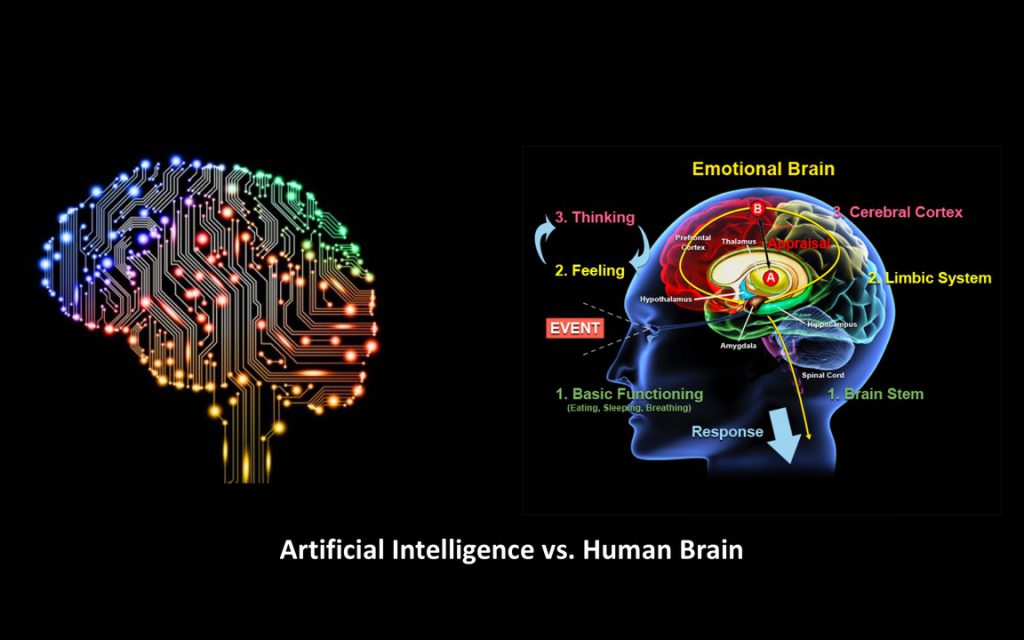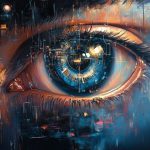Introduction: Two Incredible Thinking Machines 💡
The human brain 🧠 and artificial intelligence 🤖 are two marvels of “thinking” capability. One is a product of millions of years of biological evolution, while the other is a result of just decades of technological progress. Yet, both are capable of learning, problem-solving, and pattern recognition. But how do they actually compare? Is AI just a digital replica of the human brain? Let’s dive into the intricate structures and functionalities of both to understand their unique abilities and limitations.
1. The Human Brain: Nature’s Masterpiece 🧬
The human brain is the most complex biological structure known to man. It contains approximately 86 billion neurons, each forming thousands of connections called synapses. These networks are the foundation for thoughts, memories, emotions, and actions.
Key Features of the Human Brain:
-
Neurons & Synapses: Basic units for information processing and communication.
-
Neuroplasticity: The brain’s ability to adapt, reorganize, and change its structure based on experiences.
-
Parallel Processing: Multiple brain regions can work at the same time to process visual, auditory, and emotional information.
-
Energy Efficiency: Operates on roughly 20 watts of energy – less than a light bulb!
-
Consciousness & Emotion: The brain allows for self-awareness, abstract thought, and emotional depth.
🧠 Interesting Fact: The brain can store an estimated 2.5 petabytes of information – roughly 3 million hours of TV shows!
2. Artificial Intelligence: Man-Made Intelligence 🖥️
AI, especially in the form of neural networks, is inspired by the human brain’s architecture. However, it functions very differently. Modern AI uses algorithms, massive datasets, and computational power to perform tasks such as recognizing faces, translating languages, or driving cars autonomously.
Key Features of AI Systems:
-
Artificial Neural Networks (ANNs): Modeled loosely on human brain neurons, ANNs are layered to form deep learning models.
-
Training & Learning: AI learns from data, using mathematical functions to adjust internal parameters (weights).
-
Speed & Accuracy: AI can process and analyze data at lightning-fast speeds, often outperforming humans in specific tasks.
-
No Consciousness or Emotion: AI doesn’t “feel” or have self-awareness—it operates based on logic and input-output functions.
-
Energy Usage: Large AI models require significant energy and computational resources.
🤖 Interesting Fact: GPT-4, a popular AI model, has over 100 trillion parameters—more than the number of synapses in the human brain!
3. Structural Comparison: Biological vs Digital 🧩
| Feature | Human Brain | Artificial Intelligence |
|---|---|---|
| Basic Unit | Neuron | Artificial Neuron (Node) |
| Connections | Synapses | Weights in a Neural Network |
| Learning Process | Experience & Neuroplasticity | Training with Data & Backpropagation |
| Energy Consumption | ~20 watts | Hundreds to thousands of watts |
| Memory | Associative, adaptive | Static unless retrained |
| Adaptability | Extremely adaptable | Context-limited adaptability |
| Error Tolerance | Can recover from injury | Prone to error without retraining |
| Creativity & Emotion | High | Zero (mimics patterns only) |
4. Cognitive Capabilities: Who Learns Better? 🧠⚡🤖
The brain and AI excel in different areas. Humans are exceptional at abstract thinking, moral reasoning, empathy, and creativity. AI, on the other hand, is outstanding in data-driven decision-making, pattern recognition, and repetitive task automation.
Human Advantages:
-
Emotional Intelligence
-
Intuition
-
Adaptation in novel situations
-
Moral and ethical judgment
AI Advantages:
-
Speed and precision
-
Data handling at scale
-
24/7 operation without fatigue
-
Bias-free (if trained correctly)
But unlike AI, humans can reflect, dream, and imagine the future.
5. Limitations of Both Minds 🧱
Human Brain Limitations:
-
Susceptible to bias and emotions
-
Slower information processing
-
Memory lapses
-
Subject to aging and disease
AI Limitations:
-
Requires massive data
-
Can’t understand context like humans
-
Lacks real-world common sense
-
No true understanding or awareness
6. The Future: Brain-Inspired AI and AI-Enhanced Brains 🧠🤖💥
Researchers are working on neuromorphic computing, which mimics the brain’s structure more closely using hardware like memristors. At the same time, brain-computer interfaces (like Elon Musk’s Neuralink) aim to connect AI directly to human brains, promising enhanced cognitive functions.
The lines are blurring:
-
AI is becoming more adaptive and intelligent
-
Humans are exploring cybernetic enhancements
We’re entering an era where humans and AI might complement each other more than compete.
Conclusion: Not a Battle, But a Partnership 🤝
While the human brain and AI are fundamentally different, both represent incredible feats of nature and engineering. AI might never “feel” or “think” like a human, but it can amplify our abilities, automate tasks, and even help us better understand our own minds.
So instead of asking “who’s smarter?”—perhaps the better question is: how can we work together to solve the world’s biggest problems? 🌍💡


